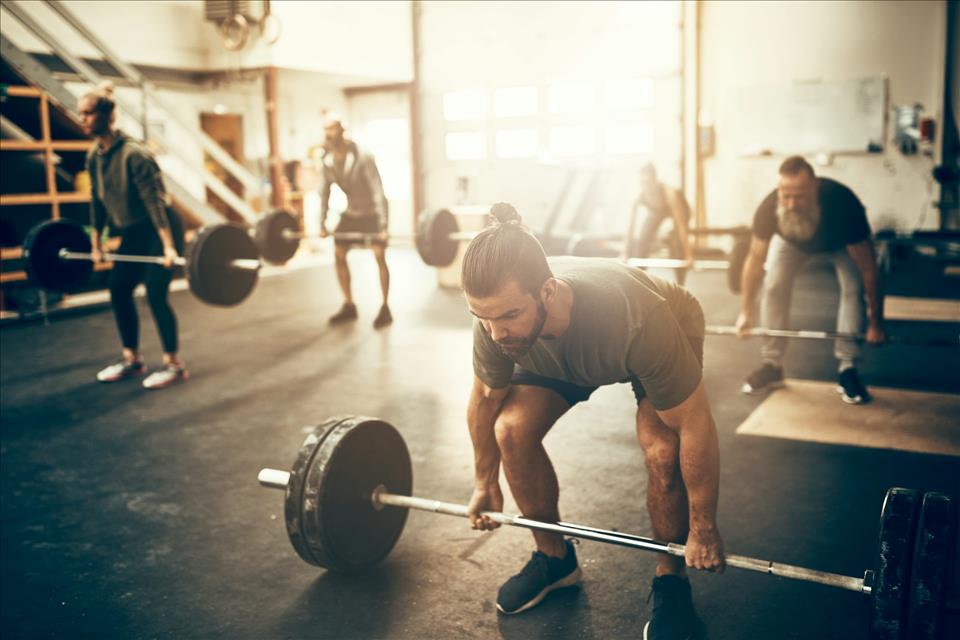
What Are Compound Exercises And Why Are They Good For You?
It can help to know there are broadly two types of movements in resistance training (lifting weights): compound exercises and isolation exercises.
So what's the difference? And what's all this got to do with strength, speed and healthy ageing?
What's the difference?Compound exercises involve multiple joints and muscle groups working together.
In a push up, for example, your shoulder and elbow joints are moving together. This targets the muscles in the chest, shoulder and triceps.
When you do a squat, you're using your thigh and butt muscles, your back, and even the muscles in your core.
It can help to think about compound movements by grouping them by primary movement patterns.
For example, some lower body compound exercises follow a“squat pattern”. Examples include bodyweight squats, weighted squats, lunges and split squats.
A Bulgarian split squat is a type of compound movement exercise. Evelin Montero/Shutterstock
We also have“hinge patterns”, where you hinge from a point on your body (such as the hips). Examples include deadlifts, hip thrusts and kettle bell swings.
Upper body compounded exercises can be grouped into“push patterns” (such as weighted rows, or vertical barbell lifts) or“pull patterns” (such as chin ups or lat pull downs, which is where you use a pulley system machine to lift weights by pulling a bar downwards).
In contrast, isolation exercises are movements that occur at a single joint.
For instance, bicep curls only require movement at the elbow joint and work your bicep muscles. Tricep extensions and lateral raises are other examples of isolation exercises.
Many compound exercises mimic movements we do every day. Photo by Ketut Subiyanto/Pexels Compound exercises can make daily life easier
Many compound exercises mimic movements we do every day.
Hinge patterns mimic picking something off the floor. A vertical press mimics putting a heavy box on a high shelf. A squat mimics standing up from the couch or getting on and off the toilet.
That might sound ridiculous to a young, fit person (“why would I need to practise getting on and off a toilet?”).
Unfortunately, we lose strength and muscle mass as we age. Men lose about 5% of their muscle mass per decade, while for women the figure is about 4% per decade.
When this decline begins can vary widely. However, approximately 30% of an adult's peak muscle mass is lost by the time they are 80.
The good news is resistance training can counteract these age-related changes in muscle size and strength.
So building strength through compound exercise movements may help make daily life feel a bit easier. In fact, our ability to perform compound movements are a good indicator how well we can function as we age .
Want to be able to get stuff down from high shelves when you're older? Practising compound exercises like a vertical press could help. Galina_Lya/Shutterstock What about strength and athletic ability?
Compound exercises use multiple joints, so you can generally lift heavier weights than you could with isolation exercises. Lifting a heavier weight means you can build muscle strength more efficiently.
One study divided a group of 36 people into two. Three times a week, one group performed isolation exercises, while the other group did compound exercises.
After eight weeks, both groups had lost fat. But the compound exercises group saw much better results on measures of cardiovascular fitness, bench press strength, knee extension strength, and squat strength.
If you play a sport, compound movements can also help boost athletic ability.
Squat patterns require your hip, knee, and ankle to extend at the same time (also known as triple extension).
Our bodies use this triple extension trick when we run, sprint, jump or change direction quickly. In fact, research has found squat strength is strongly linked to being able to sprint faster and jump higher .
Isolation exercises are still goodWhat if you're unable to do compound movements, or you just don't want to?
Don't worry, you'll still build strength and muscle with isolation exercises.
Isolation exercises are also typically easier to learn as there is no skill required. They are an easy and low risk way to add extra exercise at the end of the workout, where you might otherwise be too tired to do more compound exercises safely and with correct form.
In fact, both isolation and compound exercises seem to be equally effective in helping us lose body fat and increase fat-free muscle mass when total intensity and volume of exercises are otherwise equal.
Some people also do isolation exercises when they want to build up a particular muscle group for a certain sport or for a bodybuilding competition, for example.
Isolation exercises have their role to play. Photo by Kampus Production/Pexels I just want a time efficient workout
Considering the above factors, you could consider prioritising compound exercises if you're:
-
time poor
keen to lift heavier weights looking for an efficient way to train many muscles in the one workout
interested in healthy ageing.
That said, most well designed workout programs will include both compound and isolation movements.

Legal Disclaimer:
MENAFN provides the
information “as is” without warranty of any kind. We do not accept
any responsibility or liability for the accuracy, content, images,
videos, licenses, completeness, legality, or reliability of the information
contained in this article. If you have any complaints or copyright
issues related to this article, kindly contact the provider above.


















Comments
No comment